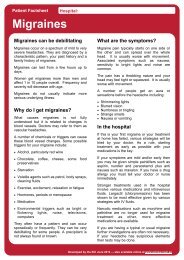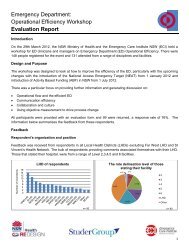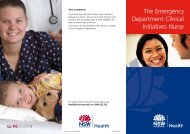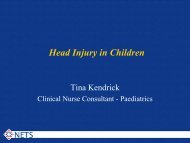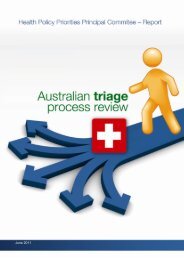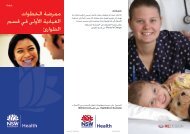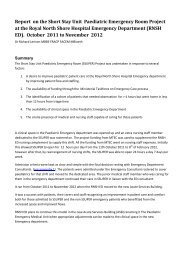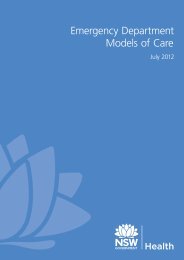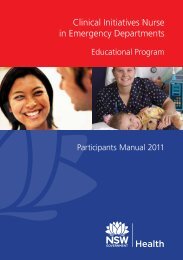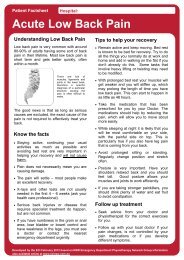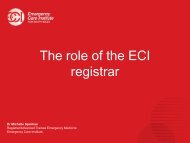Facilitators Manual - Emergency Care Institute
Facilitators Manual - Emergency Care Institute
Facilitators Manual - Emergency Care Institute
Create successful ePaper yourself
Turn your PDF publications into a flip-book with our unique Google optimized e-Paper software.
2 Program outline2.1 Program outlineProgram aimsThe Transition to <strong>Emergency</strong> Nursing Program aims to meet the needs of all stakeholders within thedynamic context of health, and provides clinicians within the emergency setting a standardised yetflexible program in which to:• Further develop the confidence and competence of the emergency nurse within a supportive clinicalsetting.• Enhance professional adjustment of the nurse new to emergency practice, and their assimilation intothe workplace.• Improve retention in the nursing workforce.• Work in collaboration with all members of the healthcare team to develop an educationally supportiveclinical culture.• Use current processes 1 and professional development opportunities 2 already available within areahealth services to provide the novice emergency nurse a comprehensive but flexible program thatsupports their transition from novice to advanced 3 beginner.• Provide varied learning opportunities, during which the participant can access, share and validateknowledge.• Develop communities of practice that are reflective, think critically and respond appropriately.• Provide quality care and outcomes for their patients.• Ensure development of core foundational skills and knowledge to enable safe delivery of care.52.2 What the Program will deliverParticipants who complete the Program will be able to:• Discuss the context of emergency department care across healthcare disciplines.• Assess and identify abnormalities of a patient’s airway including c-spine precautions and providesafe and effective care to the patient.• Assess and identify abnormalities of a patient’s respiratory status and provide safe and effectivecare to the patient, including respiratory and oxygenation support.• Assess and identify abnormalities of a patient’s cardiovascular, fluid and electrolyte status andprovide safe and effective care to a patient requiring non-invasive haemodynamic monitoring andcardiovascular support.• Assess and identify abnormalities of a patient’s gross neurological function and provide safe andeffective care of the patients with neurological dysfunction and/or disability.• Assess the patient’s level of pain and plan safe and effective management.• Develop skills essential to <strong>Emergency</strong> Nursing, including:- primary survey- secondary survey- focused history-taking- effective and appropriate documentation and communication- legal requirements- safe disposition and transfer of a patient- appropriate use of clinical guidelines- communication with aggressive patients/relatives.1Performance appraisals, skills trees, support mechanisms2In-services, e-learning, continuing professional development programs, learning contracts, portfolios & forums3Novice: A clinician who has no practical experience and must base what they do on principles and rules (Benner:1984)Advanced Beginner: A clinician who has dealt with enough real patient care experiences to recognize recurring componentsof the situation. They are also learning to discriminate between normal and abnormal situations and establish priorities as towhat’s important (Benner: 1984).




